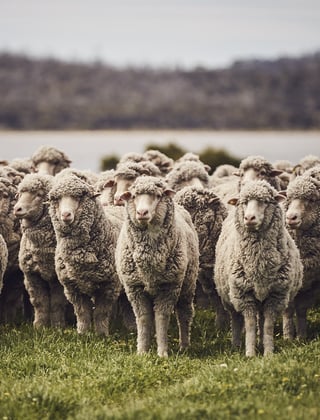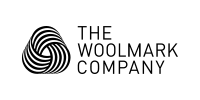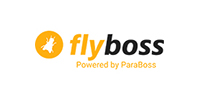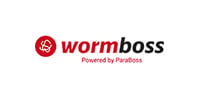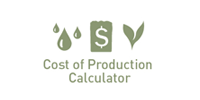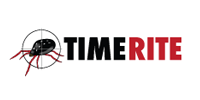Woolgrowers witness China's immense investment in wool

A group of 30 woolgrowers and Elders staff visited China in March on a two-week tour of textile mills and retail operations that process and sell Australian wool. They were impressed by China’s high level of investment in the wool industry.
Australian woolgrowers proudly put great effort into producing their wool each year, but most growers do not get the opportunity to see what happens to their fibre once it is pressed into bales and driven past the farm gate.
Approximately 85% of all Australian wool ends up being exported to China for processing, with about half of that wool being manufactured into products sold domestically to consumers in China. As part of ongoing effort to connect Australian woolgrowers with the people and places that handle their wool after it leaves the farm, Elders recently hosted a trip to China for 30 woolgrowers and staff from New South Wales, Victoria, South Australia, Western Australia and Queensland.
“This kind of trip helps complete the picture for growers,” said Elders District Wool Manager Craig Potter, based at Ararat in Victoria, who attended the China tour. “They spend their time on farm growing the wool, but the tour lets them see what happens next: who’s using it, what they value, and how it gets turned into the final product.”
Andrew Dennis of Rosewood Wool Services organised and conducted the tour on behalf of Elders, as he has done for the past 15 years.
“The woolgrowers came away amazed at the passion in the Chinese industry for Merino wool at both a processor and retail level. To see the scale and breadth of some of the processing facilities first hand is mind boggling for the first time visitor,” Andrew said.
Woolgrowers Michelle Elsom and her daughter Grace, who farm with Michelle’s husband David and other daughter Emily at ‘Old Ripponhurst’ near Warrabkook in the Western District of Victoria, were very impressed with what they saw on the tour.
“After visiting several Chinese textile mills during our time away, we were amazed at the amount of investment that is going into the industry – from the research and development phase to new factories and automation,” they said.
Wool processing and manufacturing
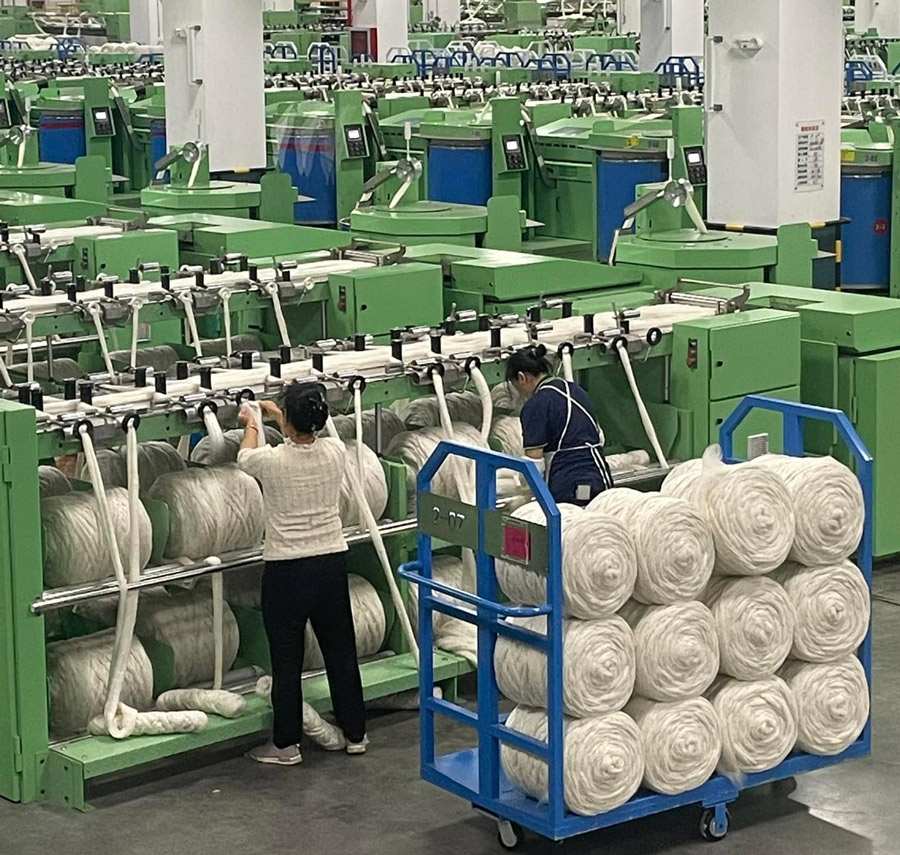
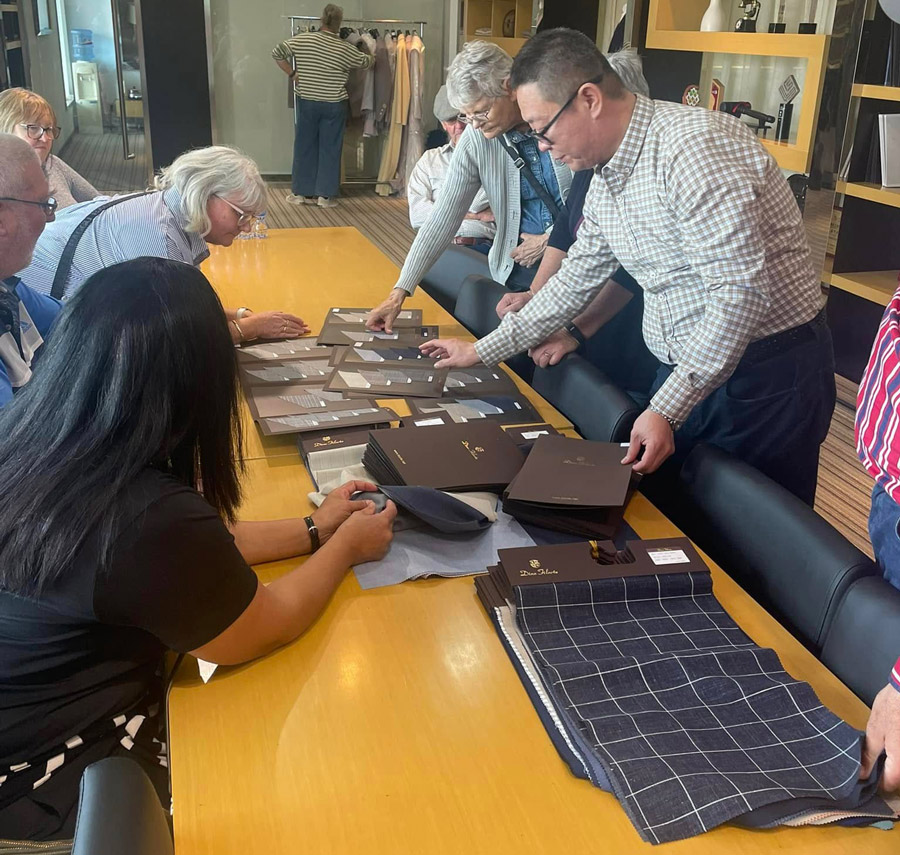 The woolgrowers were impressed with the scale, technology and quality of the wool industry in China.
The woolgrowers were impressed with the scale, technology and quality of the wool industry in China.
The group began their tour in Shanghai and visited Tongxiang to see the newly opened Redsun/Sunwoo combing mill which is the newest and perhaps the most efficient combing mill in the world. It is certainly a showpiece for the industry; the new mill can scour 40 million kg of wool per year, and comb about 24 million kg of wool top which is equivalent to 200,000 bales of wool.
Similar to Elders’ automated wool handling facilities in Melbourne (see the article in the September 2024 edition of Beyond the Bale), the combing mill uses numerous robots to sort, stack and deliver greasy wool bales to the production line. Barrels of carded sliver and combed wool top are moved around the combing mill seamlessly by automated machines, and the finished product wool store is also fully robotised.
“This newly built facility neatly fits into the Chinese government’s stated aims of improving manufacturing efficiency and making greater use of artificial intelligence and robotics and so is considered one of the premier combing mills in the world,” Andrew said.
A whole day of the tour was spent at the vertically integrated Nanshan mill in Shandong Province following wool from the greasy stage to the finished suit.
“The scale of the Nanshan textile operation is certainly impressive with 2,000 suits per day being made for a variety of customers as well as worsted fabric for the Chinese domestic market and export markets across the world,” Andrew said.
“Growers were simply amazed at the complexity of the process required to turn greasy wool into a suit, the investment involved and the number of hands touching the fibre on its way through the pipeline.”
Back in Shanghai, the group also visited Woolmark licensee Shanghai Challenge, a renowned producer of fine knitwear and undergarments. Again the implementation of automated machinery was clear to see as rolls of fabric trundled around the factory floor without the assistance of humans.
Marketing, education and retail
A visit to the premier retail outlet of leading Chinese eco-luxury brand and Woolmark licensee ICICLE was particularly exciting for woolgrowers Michelle and Grace Elsom. Wool from their Warrabkook property was used in the brand’s Dew Wool collection of traceable outwear, which was developed in collaboration with AWI subsidiary Woolmark (see the article in the September 2024 edition of Beyond the Bale).
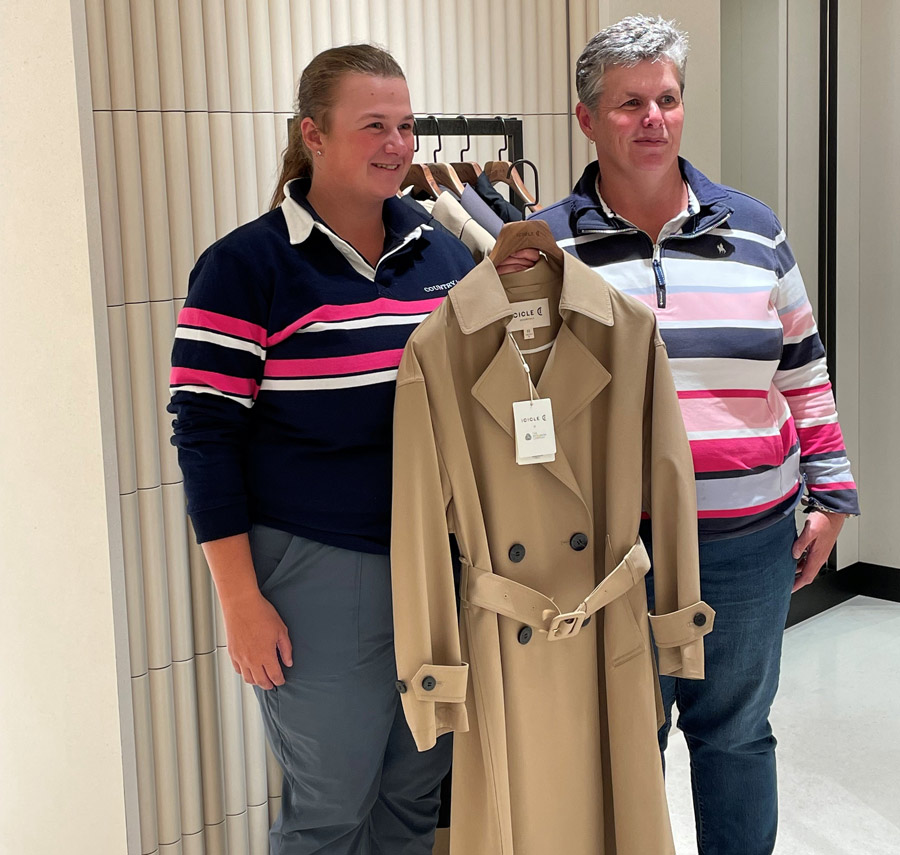 Woolgrowers Grace and Michelle Elsom with an ICICLE coat containing wool from their farm.
Woolgrowers Grace and Michelle Elsom with an ICICLE coat containing wool from their farm.
At the store, Michelle and Grace were able to scan the QR code on a coat in the collection and see their farm details displayed, including pictures of them as the producers of the 17.5 micron Merino wool used in the product.
“We were really humbled to see our wool in a product hanging in the high-end Chinese clothing store ICICLE. To have the Dew Wool collection launched on our property in Australia and to then see a coat hanging on a rack available for sale in China with a QR code linked back to our farm is once in a lifetime for us,” they said.
The AWI/Woolmark team in Shanghai hosted the delegation at the Wool Education Centre in Donghua University which is a functional space to showcase new product developments and often used as a training facility for retail staff and newcomers to the industry.
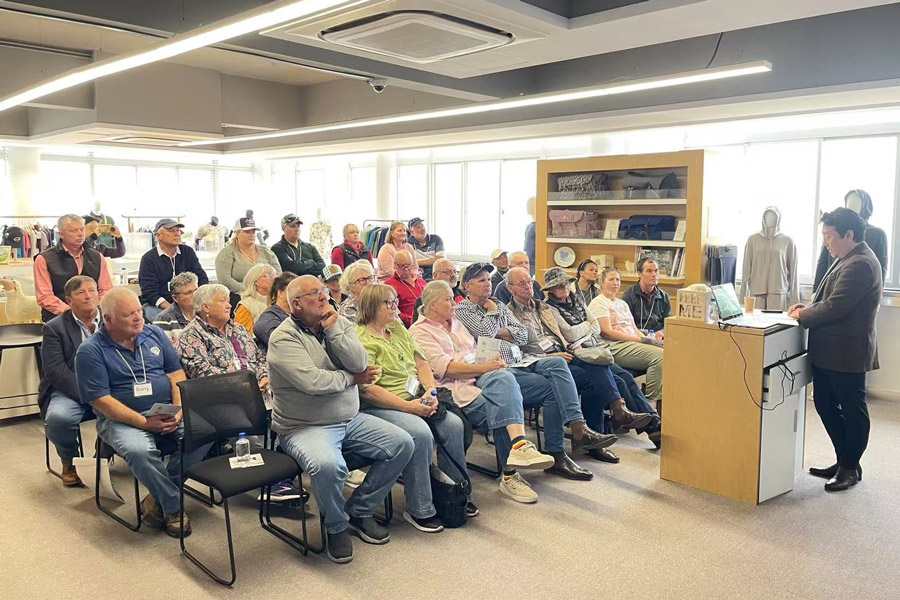 AWI Country Manager for China, Jeff Ma, presenting to the woolgrowers.
AWI Country Manager for China, Jeff Ma, presenting to the woolgrowers.
The delegation learnt a lot about the scope of the wool industry in China and how AWI/Woolmark supports the manufacturing sector as well as retailers.
“We are always delighted to receive visits from Australian woolgrowers so we can show them first-hand where their wool levies are being invested,” said AWI Country Manager for China, Jeff Ma.
“At the Wool Education Centre, which AWI helped establish in 2018, we gave presentations to the woolgrowers on topics including the Chinese retail market, our recent consumer and trade marketing projects, as well as our Woolmark licensee program and R&D initiatives.”
Australian Merino genetics in China
After some tourist stopovers at the Great Wall and the Forbidden City, the group visited a sheep farm and artificial insemination breeding centre in Inner Mongolia.
The group talked with farmers and local government officials about the difficulties they face producing Merino wool in such a harsh environment. Each local farmer has only between 200 and 300 Merino sheep, but given the severity of the winter all animals are housed for up to five months of the year.
The wool being produced, using imported Australian rams and ewes which are then used at the breeding centre to produce flock rams for the local farmers, was a good quality 20-21 micron wool although with a lowish yield given the feeding regime.
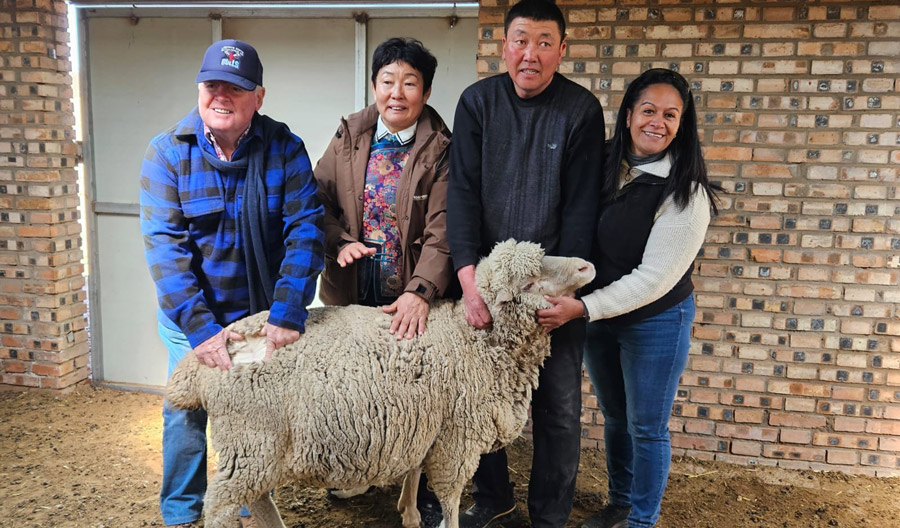 Australian Merino genetics in Inner Mongolia.
Australian Merino genetics in Inner Mongolia.
“There’s a lot of pride in what they’re doing, and a real willingness to share ideas,” Craig said. “It was obvious how excited they are about wool and the opportunities it brings.”
Shearing is still an arduous process in this area with most animals being shorn by hand, but the small flock size does lend itself to excellent husbandry and lambing percentages were reportedly more than 150%.
As with woolgrower gatherings all across the world, a large dinner featuring lamb in many dishes and local wine and beer ended a successful visit.
The group ticked off some further tourism highlights of China before returning home very enthusiastic about the future of the wool industry.
This article appeared in the Winter 2025 edition of AWI’s Beyond the Bale magazine that was published in June 2025. Reproduction of the article is encouraged.







